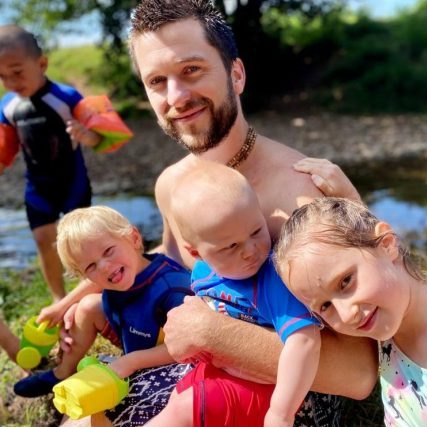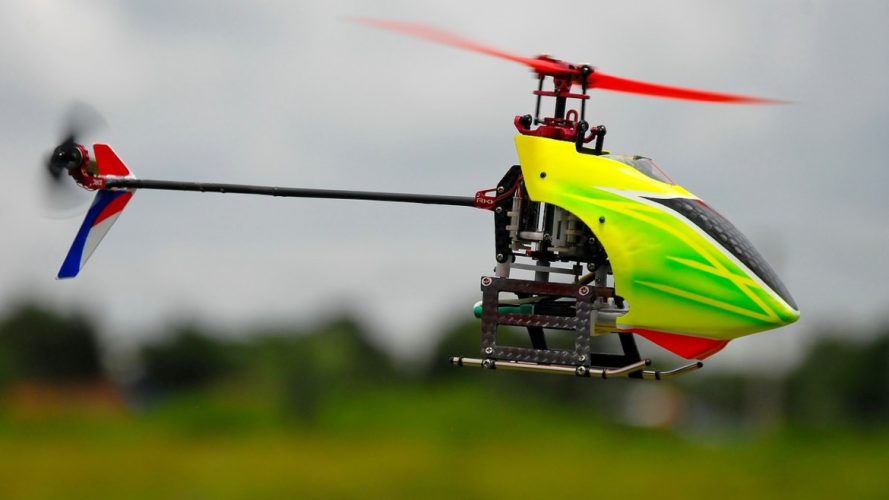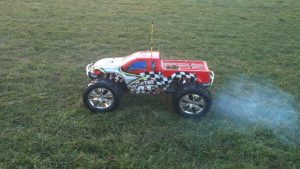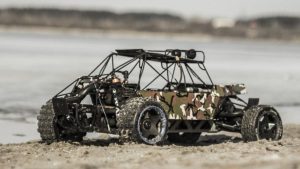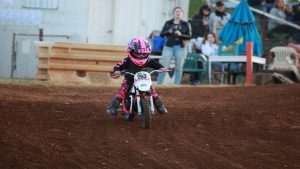Remote control helicopters take the motorized fun off the ground and into the air, but this change of venue can bring some new challenges to RC play. A new control style and new obstacles to navigate are two of the most obvious differences beginners face when flying their first RC helicopter. There’s definitely a learning curve, but following a few simple guidelines can make mastering copters much easier. If you’re just starting out, check out our beginner tips for flying RC helicopters to improve your performance and prevent damage during flights.
#1 Choose a lower end model to start
We know there are a lot of super-slick RCs out there, especially copters and flying vehicles, but they’re not always the best bet for a first timer. It’s important to think realistically – beginners crash. Sometimes, that’s going to mean damage that requires replacement parts, perhaps even a new toy all together. That’s less painful when the copter isn’t very pricey and has parts that are inexpensive to replace. Beginners often find it easier to fly “coaxial” copters, which feature two rotors on top that make it easier for users to maintain a hovering position.
#2 Master the controls
RC vehicles on the ground have controls that are pretty easy to master, making the same forward, reverse and turning motions as a typical car. In the air, controls become a bit more complex. From a mathematical perspective, you’re operating on a z-axis, which means upward and downward motion need to be accounted for in addition to directional motion. There are four basic controls: the throttle moves the copter up and down, the rudder rotates it left and right, the elevator moves it forward and backward and the aileron strafes the copter left and right in the air. Practicing in a controlled environment is the best way to master these unique motions.
#3 Point the tail toward the user
In order to achieve a safe, successful takeoff and hover for beginners, the tail of the copter should always be pointing toward the person controlling the copter. If you’re taking off and the tail begins to stray, try to use the rudder to realign the tail so that it’s facing you. If that’s not possible, land the copter and use manual repositioning to set it straight. This is the safest and easiest position for beginners to use when taking off and hovering.
#4 Try out some training gear
As we mentioned, it’s not at all uncommon for beginning RC copter enthusiasts to experience some crashes as they’re getting used to the process. Toy helicopters have a lot of small parts that can be damaged in crashes, and one way to minimize that damage is by using safety gear. The gear essentially works like landing gear, affixing lightweight poles and foam balls to the bottom which stabilize the copter in the event of an unexpected landing, preventing flips that can lead to broken propellers. There’s no shame in using landing gear until you’re confident in your landings – it’ll keep your toy working, and you in the game.
#5 Choose an ideal launching surface
Getting copters in the air successfully is one aspect of RC copter flight that beginners sometimes struggle with. The first step is to be sure you’re choosing a surface that’s ideal for launching. This should be a smooth floor, like one made of wood, tile or laminate. There shouldn’t be any obstacles or uneven parts of the floor that can hitch on the bottom of the copter as it attempts takeoff – if there are, it won’t launch properly and evenly. Practice launching on these surfaces for as long as it takes to master the feeling of a successful takeoff.
#6 Master hovering successfully
Once your copter is up off the ground, the next step is maintaining the hover position successfully. Raise the copter into the air, making sure that the tail is pointing at you and following guidelines for maintaining that position. Keep adjusting continuously until you’ve successfully achieved the desired position. Keep the copter about a meter in the air, practicing your control until you can keep the tail continuously pointed at yourself without a struggle. This is one of the most basic operation techniques, and helpful videos are available online to demonstrate. Sites devoted to RC copter use can guide you through the mastery of more advanced techniques.
#7 Choose safe operating conditions
The most basic guidelines for safe and fun operation of your RC copter rely on common sense. If it’s windy, raining or snowing, the weather isn’t compatible with successful RC flights. It’s better to wait for a day where the winds are relatively still and there’s no precipitation to maintain maximum control. Additionally, choose wide open spaces without in-air obstacles, especially trees and power lines. It’s okay to practice inside, too, but do it in large rooms without many breakable objects.
RC helicopters are a fun step up from standard RCs, and mastering them doesn’t have to be a hassle. Following basic guidelines for beginners goes a long way in helping users understand standard operation. Combining those guidelines with common sense flight strategies and location choices can provide lasting remote control flying fun for the whole family.

